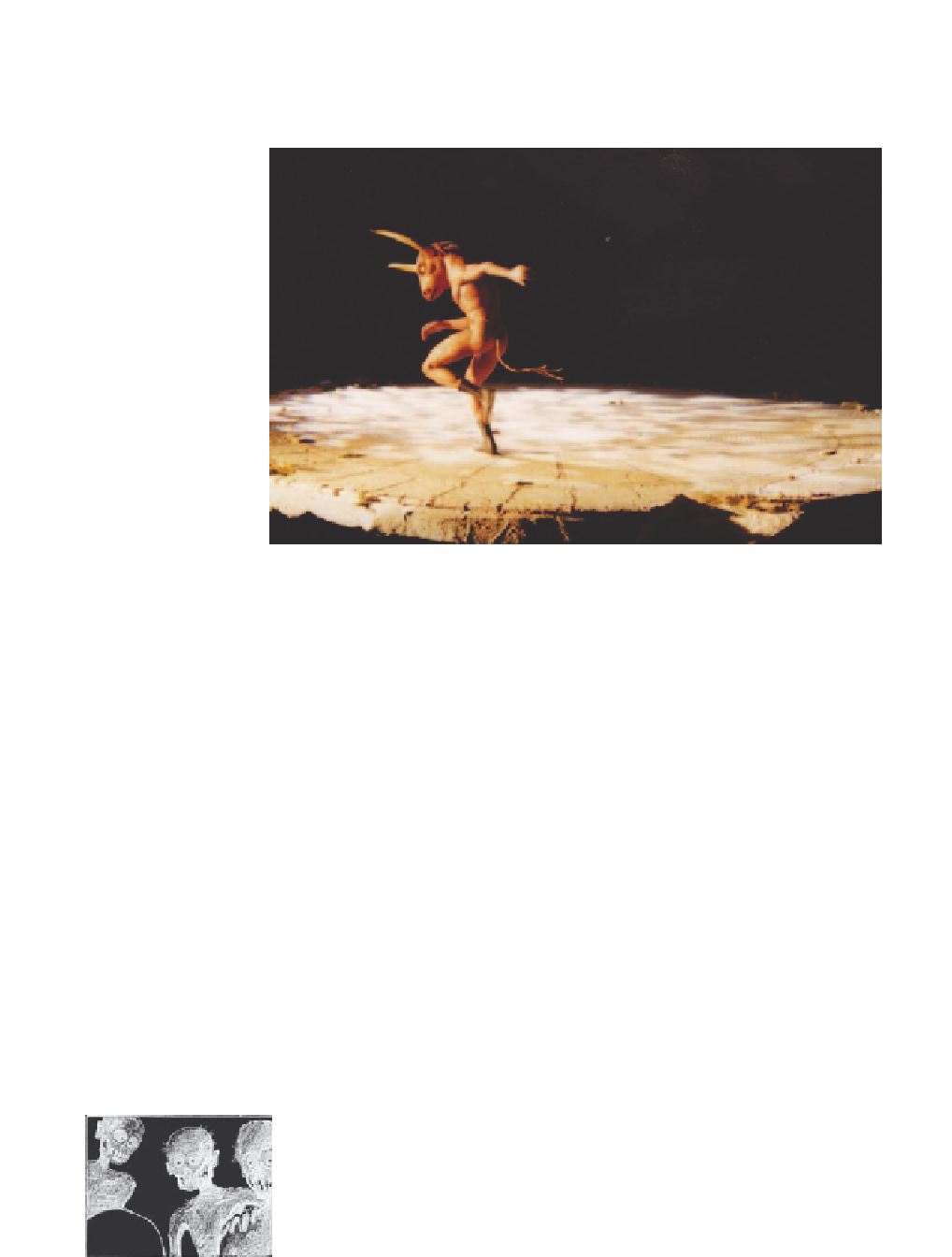Graphics Reference
In-Depth Information
Elegance was once described as the maximum of expression with the minimum of movement.
That's another way of saying that it pays to be economical. I drum it into students that an
audience would rather see one beautifully thought-out and paced movement than i ve clumsy,
awkward ones that do not have time to read.
A clearer shape with an implied sense of movement and weight.
Shape of movements
A tip for any move is to imagine a marker at the end of the limb. Over the series of frames trace
that line through space. If it is a jagged line which stutters then you can guarantee it's going
to be a jerky and ugly move. This may be intended, but if you're after a clean, readable move,
the line traced should be a clear contour. This is about relating a move to the previous and
incoming frame: that is the most basic fact about animation, that consecutive frames must
relate to each other, otherwise the eye cannot make sense of it. You cannot just think of the
frame you are working on. It is just one of a sequence. By looking at each frame you should be
able to work out which way a limb is travelling. If you can, draw on the monitor itself, plotting
a neat line, to help you become aware of the shapes you are making. This can help to gauge
the rhythm of a move. The worst move is one that is mathematically divided into even parts.
The best is one that starts with small increments then builds before coming to a halt with
small increments. If you mark each frame you will be able to transform a few dots spaced apart
into some concept of speed, much as a musician can feel the pace of a musical score by the
closeness or gaps between the printed notes.
In any action, like a walk, there are going to be dozens of dif erent bits moving at the same
time, and you need to make sure that each of these has its own shape and pattern. If you trace
these movements, you will get some surprising and beautiful patterns. Norman
Maclaren did something like this in his experimental i lms, especially in
Pas de
Deux
, which illustrates very succinctly the shapes made by a body moving
through space.
When turning a head you can mark out the move by drawing a line through
the eyes on each frame. You're unlikely to want the head to be dipping or tilting

Search WWH ::

Custom Search